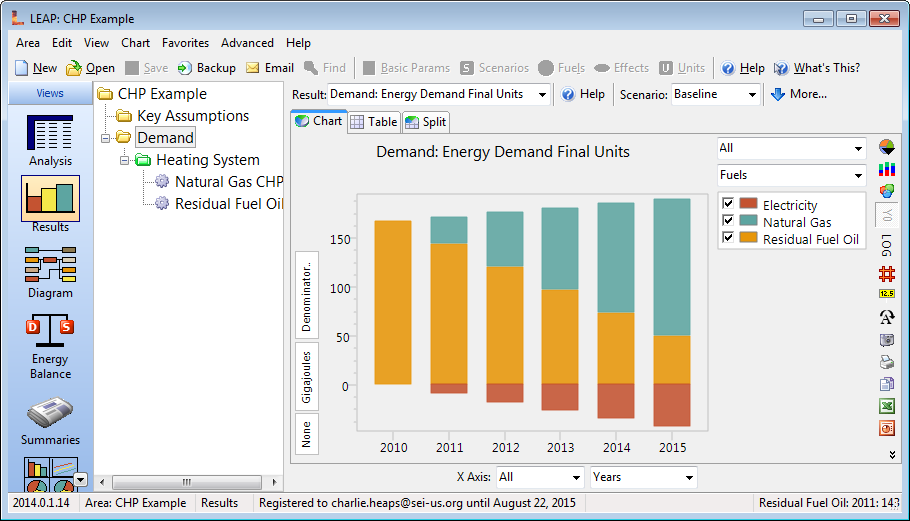Topic: About combined heat and power generation Subscribe | Previous | Next
Kong Felicity 6/27/2014
1780 Views Hi,
I am try to set up Transformation->Electricity Generation->CHP( combined heat and power generatipon),which produces both heat and electricity.I need some suggestion acheive this.
Thanks.
Ella
1777 Views Hi Ella,
There are usually two different ways that this is treated in LEAP - you can pick the most appropriate.
1) Define heat as a transformation module co-product, and then you can assign a co-product efficiency to each of the plants in your module that produce heat (leave other non-CHP plants with zero co-product efficiency). You can read about co-products and their limitations here:
http://www.energycommunity.org/WebHelpPro/Transformation/Co-product.htm
2) Define a separate transformation module for "Electricity Generation and CHP", and add heat explicitly as a second output fuel. Note that when you do this, all of the plants in the module will be assumed to produce both heat and electricity, so you will still need an electricity generation module for your electricity-only plants. You may also choose to define output fuel shares (though this is not strictly necessary), which you can read about here:
http://www.energycommunity.org/WebHelpPro/Transformation/Output_Shares.htm
Hope this helps,
Taylor
1704 Views Hi Taylor,
Let me join in this topic.
Is it possible to have heat as a co-production in demand branch?
For example, an industrial process that consumes natural gas and in the same time this process produces heat.
Thank you very much.
1703 Views >>Is it possible to have heat as a co-production in demand branch? For example, an industrial process that consumes natural gas and in the same time this process produces heat.
Hi Rahmat,
Thanks for posting on this. Yes, you can have coproducts on the demand side by creating the green category branches called "Categories with Energy Intensities" and checking the "useful energy analysis" option. These branches can then have child branches that consume one fuel but produce a coproduct.
For example, you could have a green category branch at which you specify a demand for heating, and then two or more child technology branches. One could be a simple boiler, while another could be a CHP system that consumes natural gas and produces both the heat demand specified at the green branch and electricity as a coproduct. In this situation you would specify both an efficiency (for turning gas into heat) and a coproduct efficiency (for turning gas into electricity). The sum of the efficiency plus coproduct efficiency terms must be less than or equal to 100%.
I have attached a really simple example of this, which you can download as a .leap file (you will need to visit my posting on the forum to get access to the attached LEAP file).
IMPORTANT: Before downloading and opening the attached example, please make sure you get the latest version of LEAP (2014.1.14 - posted 7/19). This new version includes important bug fixes that affected demand-side coproduction.
Best,
Charlie
Attachments:
Hi Charlie,
I got a follow-up question: the co-product of the demand side is consumed by whom?
For example, an industrial process consumes natural gas and at the same time, this process produces heat. The heat produced in this industrial process is consumed by the same industry or is accounted for heat supply and provided to other heat demand?
As I recall, the coproduction of heat (from a demand technology) will show up as a negative demand from the branch where it is produced. To get sensible results, make sure some other demand branches consume at least that much heat.





